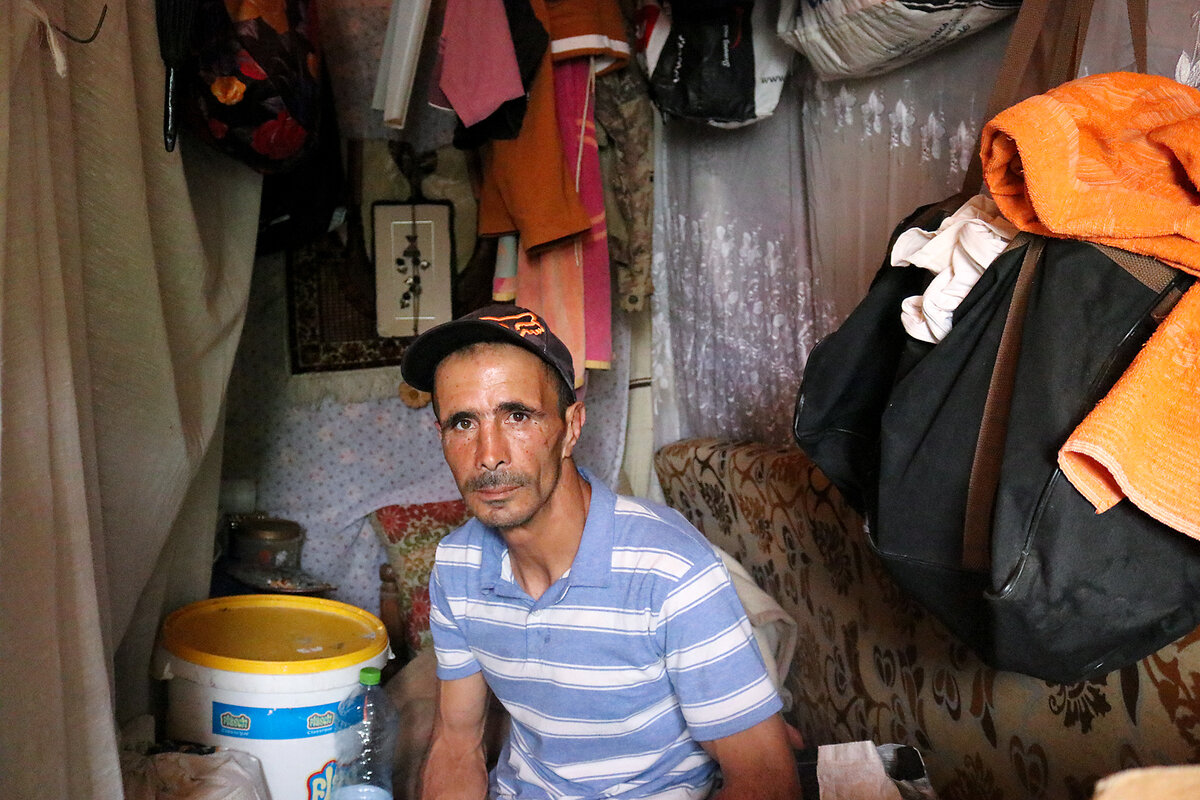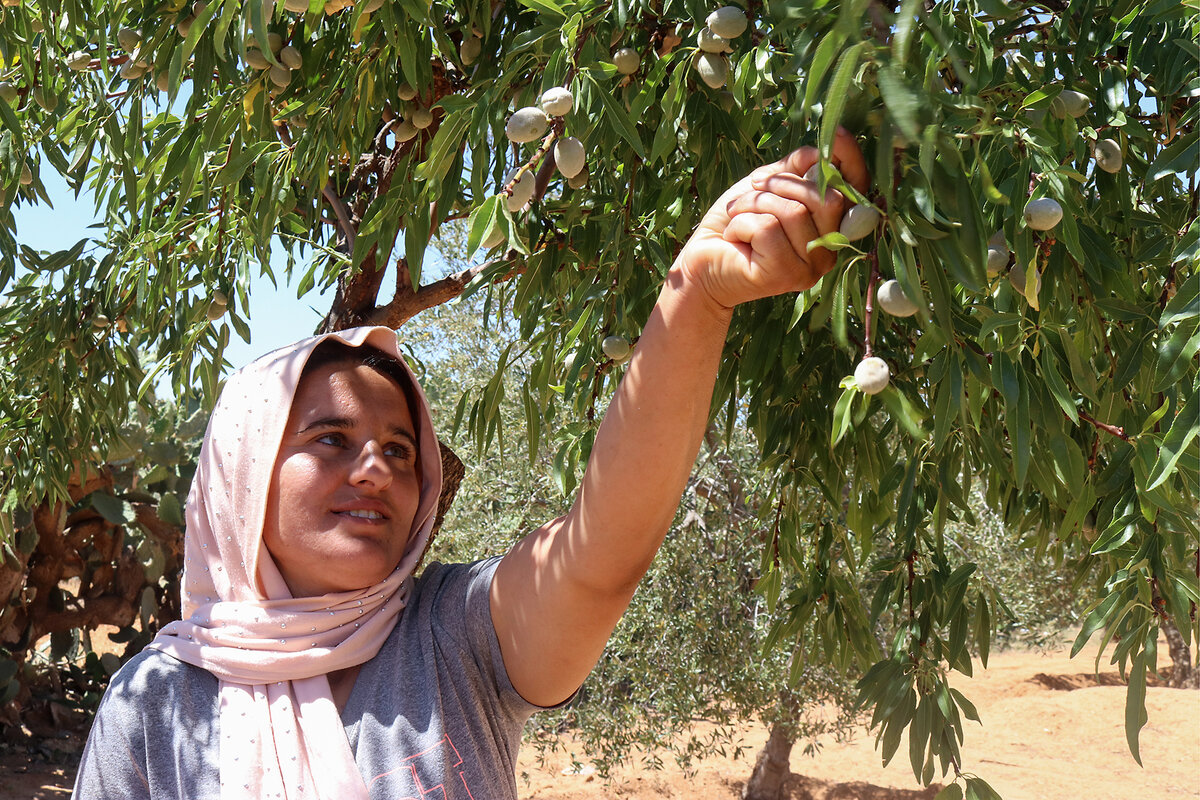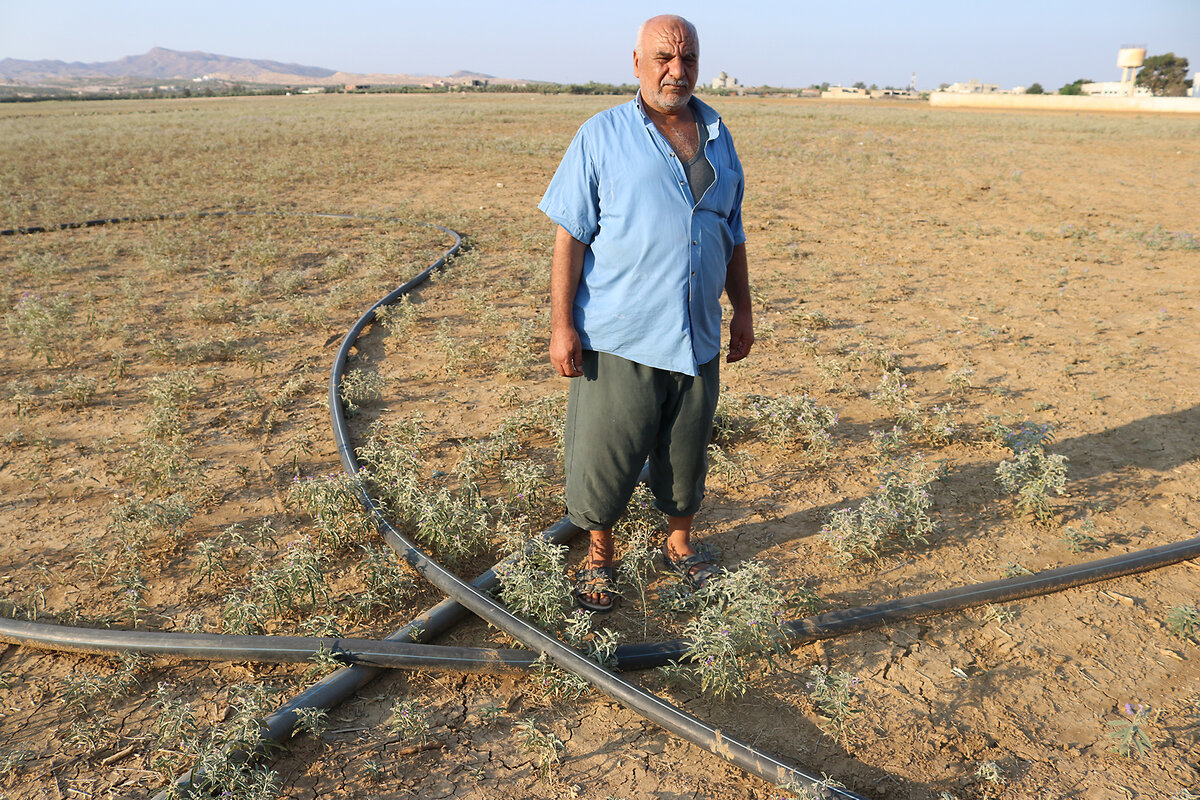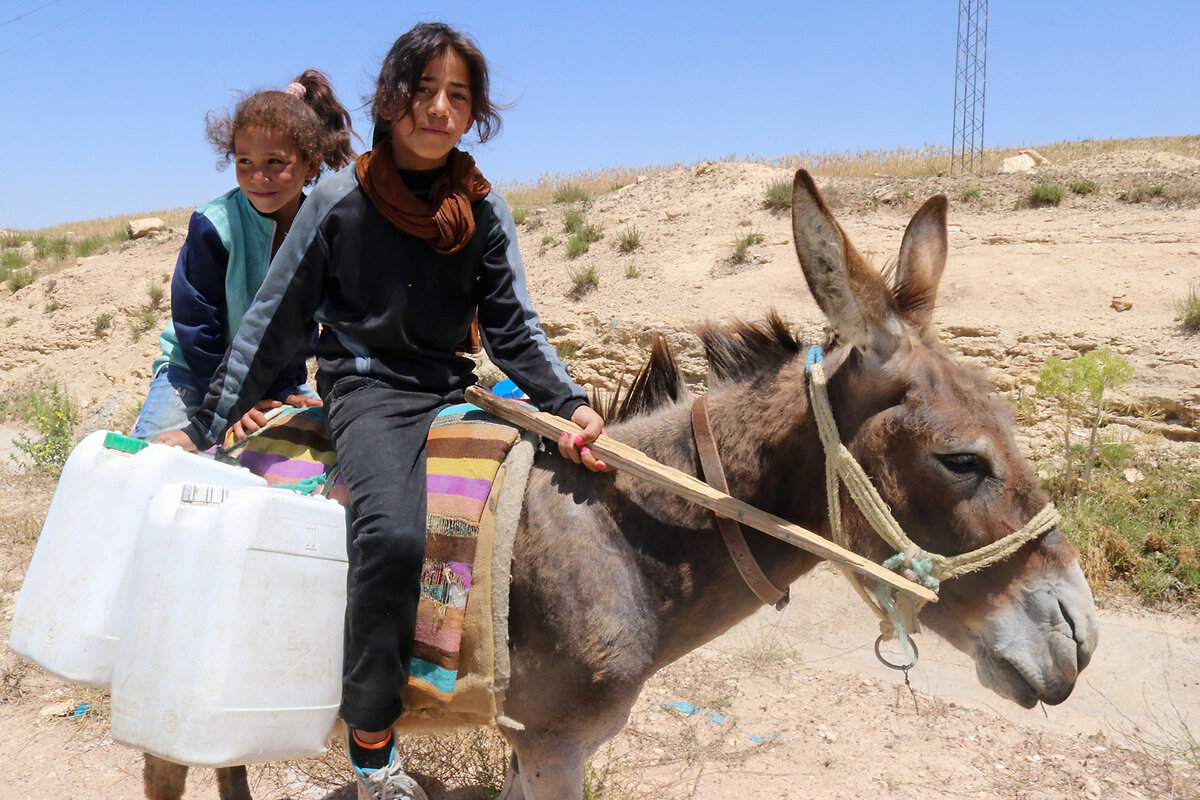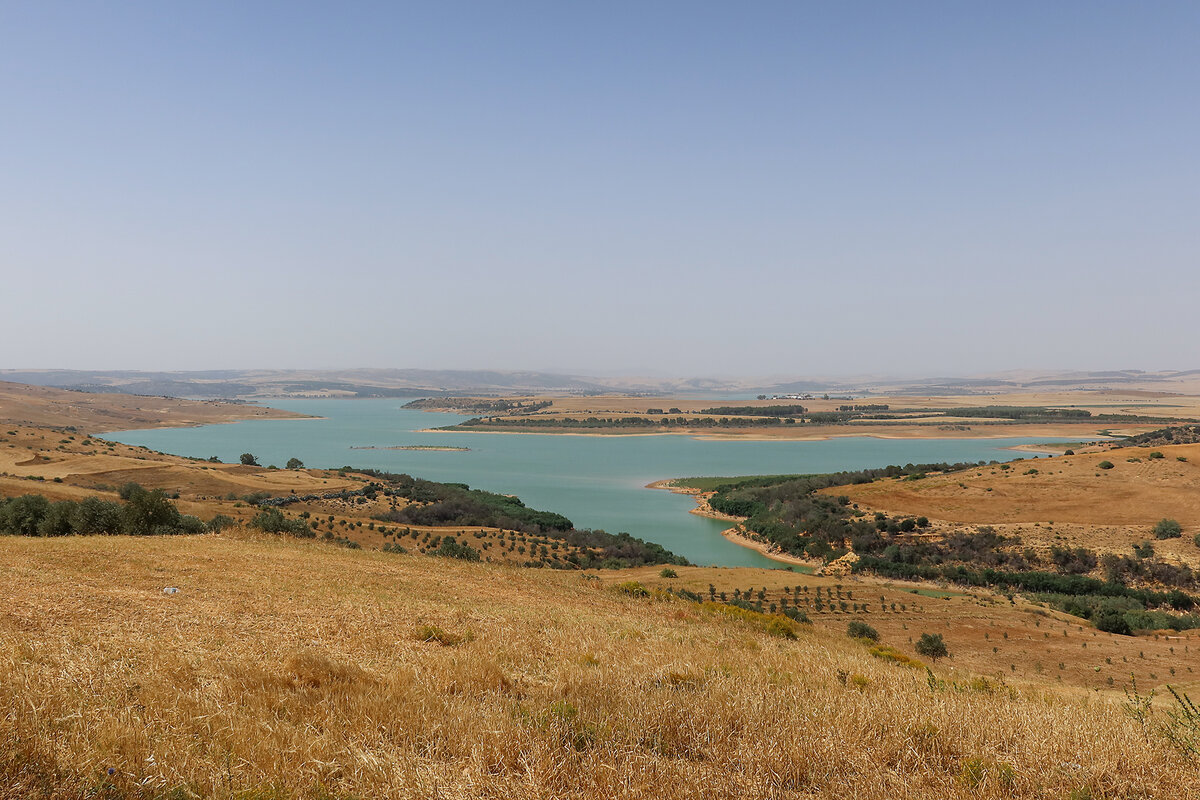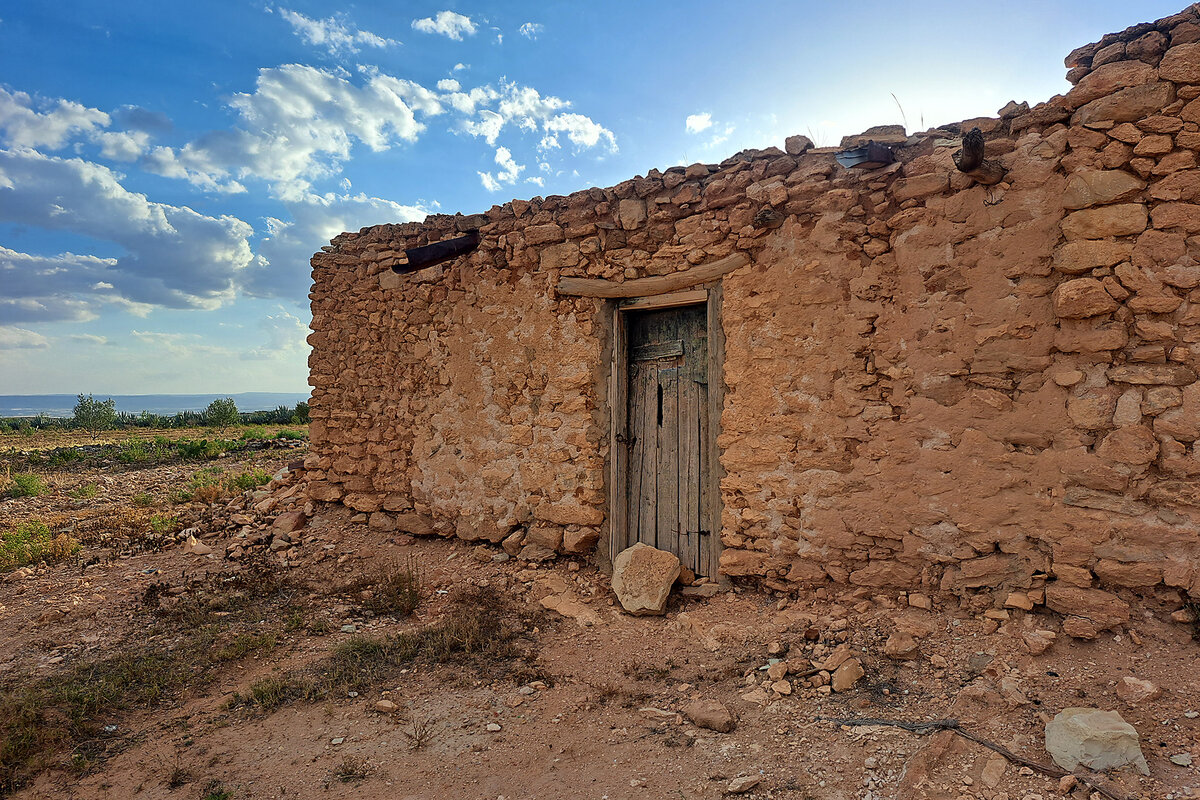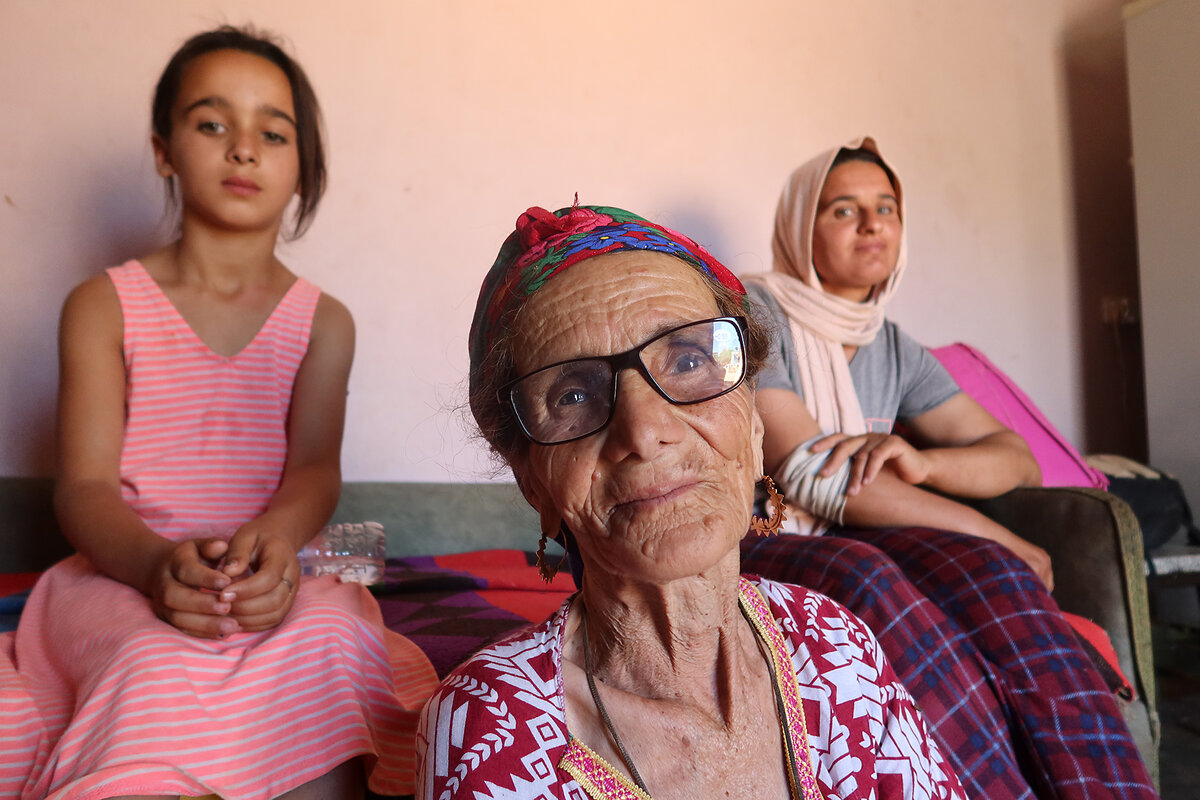What a Tunisian exodus says about the future of global migration
Loading...
| Tunis, Al-Ala, and Sisseb, Tunisia
When he clings to the outside of a fourth-story apartment, applying another coat of white paint under the glare of Tunis’ sun, or when he lies on his cot in the dark corner of an urban vegetable stand, Salih Barqoushi thinks of home, his “paradise.”
It is so vivid, he can almost touch it. Walls of prickly pear cactus reach 7 feet high. Rolling hills of millennial olive and almond trees flex their knotted branches. Echoes of laughing children bounce across the fertile blood-red soil. Chickens and quails scurry about, all under a low-hung, bright-blue sky that seems to never end.
“It is the most beautiful land; it was the most beautiful life,” Mr. Barqoushi says as he lingers near a Tunis train station hoping to be picked up for a job. His village is called Al-Ala, Arabic for “the highest.”
Why We Wrote This
A story focused onIn an age of global migration, Tunisia offers a window into key stressors driving migrants from their homes: political instability, inequality, and climate change.
Mr. Barqoushi had the highest of hopes in early 2011, like many Tunisians, when a democratic revolution demanding “dignity, social justice” ended decades of dictatorship. The new popularly elected assembly vowed to lift up rural communities after the ousting of authoritarian strongman President Zine el-Abidine Ben Ali, who for nearly 25 years directed resources away from Tunisia’s rural interior to its coastal cities. At last, farmers like Mr. Barqoushi could more than get by; they could flourish.
He married and moved into the house he was born in and bought a dozen sheep to produce milk and cheese. He rolled up his sleeves to expand his family’s rain-fed olive farm with crops such as bell peppers and tomatoes, wheat and barley.
“We thought our lives would get better,” he says.
The first setback came in 2014 when the rains stopped. His barley and wheat dried up, forcing him to purchase animal feed for his flock. After two years of rising feed prices, he was forced to sell off his sheep. By 2017, his vegetables were requiring year-round irrigation, costing more than $450 dinars, about $150, per month, and production was halved. After trying his hand at low-paying jobs in the village, scraping $8 a day, he decided he needed to leave his home, farm, wife, and children to relocate to the capital, Tunis, 125 miles away. He works as a construction day laborer painting buildings. On a good day, he earns $16 for 10 hours of work.
Mr. Barqoushi is singularly focused on what he believes is the only path to returning home, reuniting with his family, revitalizing his farm, and reversing his fortunes – a path that runs 100 meters below the earth.
If only he could tap the receding underground aquifer, he says, he could make his farm thrive.
“I wouldn’t leave my home for a single day if I had water. All I need is a well,” he says, shaking his head. “If I only had a well.”
At the current rate, it would take Mr. Barqoushi over a decade to save up the $10,000 needed to dig a 100-meter (330-foot) well.
Climate is just one factor driving migrants from their homes
Around the world, a trio of global crises – political instability, inequality, and climate change – is increasingly driving families from homes, villages, and even countries.
Although statistics on migration are complicated, the United Nations estimates that 281 million people live in a country other than that of their birth, 128 million more than 30 years ago. Hundreds of millions more are like Mr. Barqoushi, moving within borders to try to provide for loved ones.
The causes of this mass movement of humans are intertwined and, like the statistics themselves, complicated. They are also accelerating. The share of refugees and asylum-seekers from regions threatened by climate change, for instance, has jumped from 61% in 2010 to 84% in 2022, according to the United Nations refugee agency.
In few places can one observe this collision as clearly as in Tunisia. Here, in this Mediterranean African country, people are experiencing the autocratic relapse of the world’s youngest democracy, hyperinflation thanks to decades-old economic mismanagement, and temperatures warming at twice the global rate, coupled with historic drought.
But Tunisia is not unique, experts caution. What is happening here, they say, is the future of world migration.
“Tunisia is not an anomaly by any means, globally or within the region,” says Brendan Kelly, head of the migration and development unit at the International Organization for Migration in Tunisia. He cites the country’s water stress, more frequent and longer heat waves, a drop in precipitation – which is expected to drop 10% to 35% further by 2050 – and lack of economic opportunity pushing more and more Tunisians to leave their hometowns and villages.
“In Tunisia we are already seeing [how] the extremely serious consequences of climate change and environmental degradation, combined with economic factors, drive human mobility,” he says. “The projections for the next decades to come are even more serious.”
Severe drought leaves Tunisian farmers with few choices
Brahim Al Hur’s farms sit on either side of the invisible dividing line that cuts the town of Sisseb into two parts: bone-dry and going dry.
The arid climate, cool evenings, and fertile soil once made this region a breadbasket. Recently, it has been so dry that authorities have restricted agricultural water use by 50% in order to make sure residents have enough to drink.
Mr. Al Hur steps between the few scant, yellowing shrubs that are now his northern farm, kicking up dust for effect. This is the bone-dry side of town. It would cost thousands of dollars per year to pump in water from outside and $20,000 to dig a well deep enough to reach the aquifer. He frowns and shakes his head: It’s not worth the trouble.
Instead, Mr. Al Hur is throwing himself into saving his farm on the southern side of town. But his house and 2 acres there are still on the front lines of the encroaching drought. A series of thick black rubber pipes running from a well a mile outside town provides a trickle of water to his brittle olive trees. His father planted them 50 years ago; today, Mr. Al Hur can provide enough water to keep them alive, but not enough to get olives. A 100-meter well went dry four years ago. In 2022, he spent $6,500 to dig a new, deeper 200-meter well. Now that, too, is dry.
Mr. Al Hur grabs a fistful of yellowed leaves off one of the trees and crunches them in his hand.
“You see?” he says. “Even when we irrigate, it is still not enough to keep up with the hot temperatures. Our trees need more water than ever before at a time our water has never been less.”
He had wanted his son, Seifaldin, to join him in farming.
In 2022, Mr. Al Hur bought his son a truck, built him an apartment attached to the family home, and paid for his wedding. Mr. Al Hur hoped this would all help Seifaldin resist the allure drawing young Tunisian men to Europe.
But in July 2023, the younger Mr. Al Hur told his parents that he and his new wife would attend a friend’s wedding in Kasserine, 120 miles away, and would spend three nights in the town. He never came home.
One week later, a worried Mr. Al Hur received a phone call with the country code +39: an Italian number. It was his son.
“He said, ‘Thank God. I am in Italy,’” Mr. Al Hur says. He sighs.
Seifaldin had sold the truck his father gave him to pay 31,000 Tunisian dinars, or around $10,000, to smugglers to reserve spots on a boat to Sicily.
“I was shocked. The whole family was shocked,” the elder Mr. Al Hur says. He pauses to reflect. “But at least it wasn’t news of his death.”
Months earlier, a young man from a neighboring town drowned attempting the same journey. Approximately 2,498 people died or went missing while trying to cross the central Mediterranean, according to the International Organization for Migration, and Tunisian authorities recovered the bodies of 462 drowned migrants off Tunisia’s coast from January to May 2024 alone.
Mr. Al Hur’s wife cooks dinner with the kitchen door open in the evening heat. But no sounds of playing grandchildren waft in. Much in their son’s apartment remains as he left it – a closet with clothes on the hangers, rugs still rolled up in plastic, and an upturned mattress, new.
Like thousands of older Tunisian parents in interior towns and villages, Mr. Al Hur and his wife are alone.
“I provided him with everything he needed hoping that he would stay,” Mr. Al Hur says, standing in the courtyard, looking out at his drying olive trees beyond, his eyes glossy with tears. “But to young people, the future doesn’t look bright. Everything in Tunisia looks like it is heading in the wrong direction. They won’t have the life that we had.”
Young Tunisians take their chances in Europe
Seifaldin now spends 10 hours a day working in greenhouses in southern Italy. Sicily’s rolling hills and olive trees, and the brilliant blue Mediterranean sky, remind him of Sisseb – but the work is much harder.
“The place is beautiful, but the work is not,” he says from Sicily.
Still, he stands by his decision to leave.
Only in recent years have international organizations and governments recognized climate and environmental degradation as a factor driving human mobility – especially when it intersects with a lack of effective policy.
“My social situation was good,” Seifaldin says. “But for years, my income declined due to the lack of rain and groundwater.”
A few miles down the road from Sisseb is a village now known as Milano, or Milan.
The town’s real name is Elarfat. But so many younger residents have left this dusty town for Europe, its nickname has stuck. There are middle-aged parents and young children here, and a few older shepherds still living by the rusted, empty water tower, but that’s all.
Mohammed, a shopkeeper selling dry pasta and canned tuna on the side of Milano’s main road, estimates that two-thirds of the young men from 230 families here have left for either the coast or Europe. This includes his own son, who is in Italy.
Mohammed asked to withhold his full name out of fear of angering authorities for speaking to the press about migration.
“If the water finishes,” he says, “maybe only the elders will remain.”
Directly next to Mr. Al Hur’s failed farm in Sisseb, young people sit at outdoor plastic tables, facing dusty fields and nursing espressos. They talk of friends, neighbors, and relatives who have made the trip to Italy and whether they would attempt the dangerous journey themselves.
“If I had the money, I would be with them right now,” says one café patron named Hamed. His best friend and his cousin are on their way to the coastal town of Sfax, some 115 miles away, to meet with a smuggler they’ve hired to take them in a dinghy to Italy. This will be their second attempt.
The number of Tunisians migrating to Europe by boat jumped from 2,600 in 2019 to 13,000 in 2020, to 14,000 in 2021, and then to a record high of 18,400 in 2022. In 2023, the number topped 17,400.
Every time Hamed’s phone buzzes, he grabs it, almost jumping, to check the updates.
And every dinar, or 32 cents, the 23-year-old makes gets him a baby step closer to the 8,000 dinars, around $2,500, he needs to take his own chance on the Mediterranean’s choppy waters. He earns money like most men do in this town, by digging illegal wells. It’s an entire economy built on searching for the increasingly scarce drops of water.
According to the research group Arab Barometer, the percentage of Tunisians desiring to migrate has climbed from 22% in 2011, in the wake of the nation’s democratic revolution, to 46% in 2024 – the highest ever recorded in an Arab country.
For Tunisians between the ages of 15 and 29, this rate is 70%.
“Vast swaths of Tunisia are climate-vulnerable, and we can’t say that everyone is a climate migrant if they are moving,” says Lawrence Huang, policy analyst at the Washington-based Migration Policy Institute. But “understanding the way climate change is affecting them is critical so that we can prepare for and help avoid situations of forced displacement.”
“With the impacts of drought and extreme temperatures and rising sea levels, Tunisia is emblematic of global trends,” he says.
Feeling alone, local officials search for homegrown solutions
Mohammed, the shopkeeper, has tried to help the situation. In December 2023, Mohammed was elected to the area’s local council, as part of a new governing system drawn up by authoritarian President Kais Saied. Mr. Saied, who rode to victory in 2019 on a wave of popular anger over government’s failure to address deteriorating socioeconomic conditions, assumed emergency powers under the guise of pandemic control in 2021.
The strongman president and his supporters pitched local councils as a new way of governing, and as a way to empower local communities and individuals to take part in the decision-making process without having to go through political parties.
Mohammed had plans to revive the water networks and water tower, a project that has been frozen since the 1990s. Yet several months in, the Elarfat council has no budget, no funds, no mandate, and little ties or contact with government ministries and Parliament.
Mr. Saied, who ripped up the 2014 democratic constitution and drew up his own, instead appears to be preoccupied with arresting opponents and critics ahead of November’s presidential elections.
A 2022 Gallup poll showed that 85% of Tunisians were dissatisfied with government efforts to preserve their environment in their country; in 2023 and 2024, Mr. Saied oversaw crackdowns on peaceful environmental protests and locked up campaigners.
“We all have solutions that could help our community, particularly in the water situation,” Mohammed says, “but until now, we are still left on our own.”
As men search for work, women scrape by on failing farms
In Al-Ala, the village Mr. Barqoushi left to find work in Tunis, wealth determines who stays and who leaves.
A well-off family down the road is enjoying a bumper crop of tomatoes and cucumbers, fed by a deep well and water trucked in from outside. Mr. Barqoushi’s wife, Sonia, and her sisters-in-law have resorted to backbreaking work on thriving big commercial farms north of Al-Ala, picking olives or harvesting wheat for $8 a day.
Haves and have-nots in Tunisia are now water-haves and water-have-nots.
Mr. Barqoushi’s home, like most in the village of Al-Ala, is now a women-run household. Ms. Barqoushi cleans, cooks, and does maintenance on the house; helps the children with their schoolwork; tends to the chickens; and checks on the farm while her husband lives and works in the city.
“We have to be mother and father here, all of us,” she says. In Al-Ala, and across central and southern Tunisia, an entire generation of children is growing up barely knowing their fathers. “Thank God for mobile phones; otherwise they would never see their father.”
Ms. Barqoushi keeps the family farm alive – but not producing. The house’s rainwater-cache well, which once stored winter rains for household use throughout the year, now gathers enough water for just two months. During the rest of the year, the family has to bring in a commercial water tanker twice a month to fill its well, at $11 for 500 liters (130 gallons). It uses this water at home and to strategically water the pale-green olive and almond trees on the adjacent farm.
She stops and looks at the adjacent severed trunk of an almond tree that died three months ago.
Mr. Barqoushi’s mother, Ayesha, sits on a cushion, watching her grandchildren with a sad smile. Back when Mr. Barqoushi was growing up, four decades ago, Al-Ala families worked together on the farm and lived in connected houses or plots of land – raising children together, passing on the land from one generation to the next.
Of the matriarch’s five sons, three, including Mr. Barqoushi, work as day laborers in Tunis; the fourth works in construction in the coastal city of Sfax, and the fifth is doing odd jobs on the tourist island of Djerba. Her daughter moved with her husband to the capital.
“The land was generous with us,” Ayesha Barqoushi recounts. “Our entire community was one family. Now our land is thirsty, and we are scattered.”
“I just want to live on my land and be with my family”
While migration to Europe captures the imagination of young Tunisians, the bulk of Tunisian migration remains internal, with cities drawing an increased number of farmers.
“No one would give up farming for that life by choice,” says Issa Idoudi, a local Tunisian farmers union representative. “These people have no money, no options. They were forced out.”
Back in Tunis, Mr. Barqoushi is still loitering in the La Goulette neighborhood waiting for a job – he has been standing there since dawn. Slender and soft-spoken, he struggles to stand out from the row of two dozen rural migrants, also former farmers, who line up offering up their skills. As it reaches 9:30 a.m., he is resigned to the fact there will be no job today. He travels across town to the working-class neighborhood of Mourouj to go “home” – a vegetable stand run by a friend who lets Mr. Barqoushi stay for free so that he can save up money to send back home. Mr. Barqoushi slips in and out when the landlord is not in the area – their arrangement is a secret.
He sleeps in a tiny, 6-foot-by-2-foot space with a cot and a hodgepodge of tarps and curtains dividing it from the tomatoes, melons, and potatoes for sale. His personal belongings – clothes, a couple of books – are stuffed into used shopping bags, which hang from the top of his tent along with three towels and a bunch of dried garlic.
“I don’t want to migrate. I just want to live on my land and be with my family,” he says, sitting on his cot, shrouded in darkness. “Can anyone help us?”
Ahmed Ellali contributed to this report.





